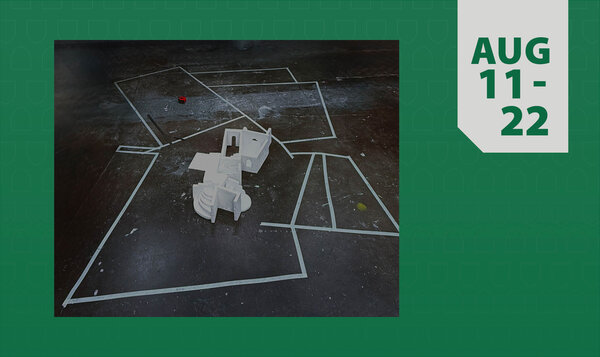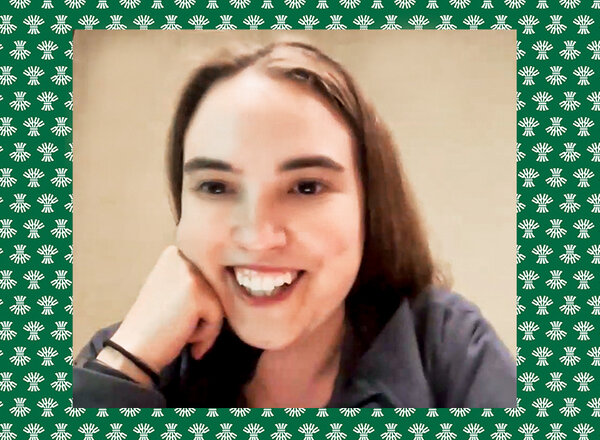
U of S students perform well in ‘notoriously difficult’ math competition
U of S students are performing in “the upper echelons” of a very difficult math competition, an Arts & Science professor says
By Shannon Boklaschuk
University of Saskatchewan students are continuing to perform in “the upper echelons” of an extremely difficult undergraduate math competition in Canada and the U.S., says a faculty member in the Department of Mathematics & Statistics.
“We certainly do far better than average,” Steven Rayan said.
The William Lowell Putnam Mathematical Competition began in 1938 and is described by the Mathematical Association of America (MAA) as “the leading university-level mathematics examination in the world.” The competition is held annually on the first Saturday of December. U of S students have participated in it since at least the early 1970s.
“It is a notoriously difficult competition, as borne out in the final scores. Of the several thousand undergraduates across North America who write it each year, the most common score is zero—typically earned by between 30 and 40 per cent of competitors,” Rayan said.
“The total possible score is 120—10 marks for each of 12 questions—which is very, very rarely achieved by anyone. A score of even just 10 usually puts a competitor into the top 30 per cent.”

The results of the 2017 competition were recently released, and second-year U of S math major Jacob Taylor performed particularly well. Taylor’s individual score was 22, which Rayan describes as “definitely something to boast about.”
“Jacob’s score is double our highest score from 2016 and put him in the top 13 per cent of all contestants this year,” Rayan said.
“In 2013, another student at the U of S received the same score as Jacob. In 2001, we had a student who scored 40 and came in 164th of all 2,594 competitors. By comparison, Jacob came in 575th of 4,638 competitors. This score of 40 may have been our best ever, although our records do have some holes as our Putnam participation goes back several decades,” he added.
“In any case, Jacob’s score compares very favourably to past performances, in particular given the number of competitors this year and also, in my opinion, the overall difficulty of the contest this year—which does vary."
Taylor prepared for the competition with his fellow U of S participants by attending weekly meetings leading up to the event. The students, with assistance from Rayan, reviewed solutions to past Putnam problems and learned problem-solving strategies.
“This was a huge help and arguably the most important reason I did well on the Putnam,” Taylor said.
“Everyone is very welcoming and being able to learn from each other is a really good experience. The professor running the meetings, Dr. Steven Rayan, is a fantastic teacher and prepared strategies and problems each week to talk about. He would often link these problems to deeper questions in math, and the meetings would often go late because of the discussion and questions people had.
“By the time the competition came, I felt I had learned a lot about mathematics—regardless of how my score would turn out.”
Taylor said he found the Putnam competition to be very difficult. However, he was surprised he answered as much as he did—four questions out of 12.
“My strategy for the competition was to look at each problem and try and decide which was the easiest. Then I would work on that one until I felt I had solved it completely and write out the solution, then repeat for the next easiest,” he said.
“Because part marks are so difficult to get on the Putnam, I felt that this would give me the best chance at a good score.”
Putnam competitors work individually on the math problems. However, there is also a team aspect to the event; institutions with at least three participants can identity three people to comprise its team.
In the 2017 competition, the U of S team score—calculated from the scores of Nicole Zolkavich, Aidan Lindberg and Thomas Stanley—earned a ranking of 99 out of 575 teams.
“This is a really solid showing,” said Rayan, noting the three students all earned scores of 10 or higher in the competition.
In total, 12 U of S students took part in the contest in 2017, more than double the number from the previous year. Rayan—who just landed the Ethel Raybould Visiting Fellowship in the School of Mathematics and Physics at the University of Queensland—said the Putnam competition builds camaraderie among the students and also promotes mathematics and the mathematical sciences in general.
“In terms of the bigger picture, it is clear that our world is becoming more quantitative with each passing day—technology, big data and analytics are everywhere—and so it is important to promote mathematics and encourage young people to do mathematics,” he said.
“Unlike the exam for a specific course, the Putnam contest goes ‘off script’ and forces students to think about math problems they might not otherwise encounter, reflecting some of the challenges that a quantitative world might throw at them down the line.”
Rayan said interest seems to be growing in the competition, since the North American contest has seen a 50 per cent increase in competitors in just over 15 years. As the contest grows, competitors from the U of S continue to do well when compared to their peers from other institutions, he said.
“Despite the increasing competition, we’ve managed to keep ourselves in the upper echelons of the competition.”


